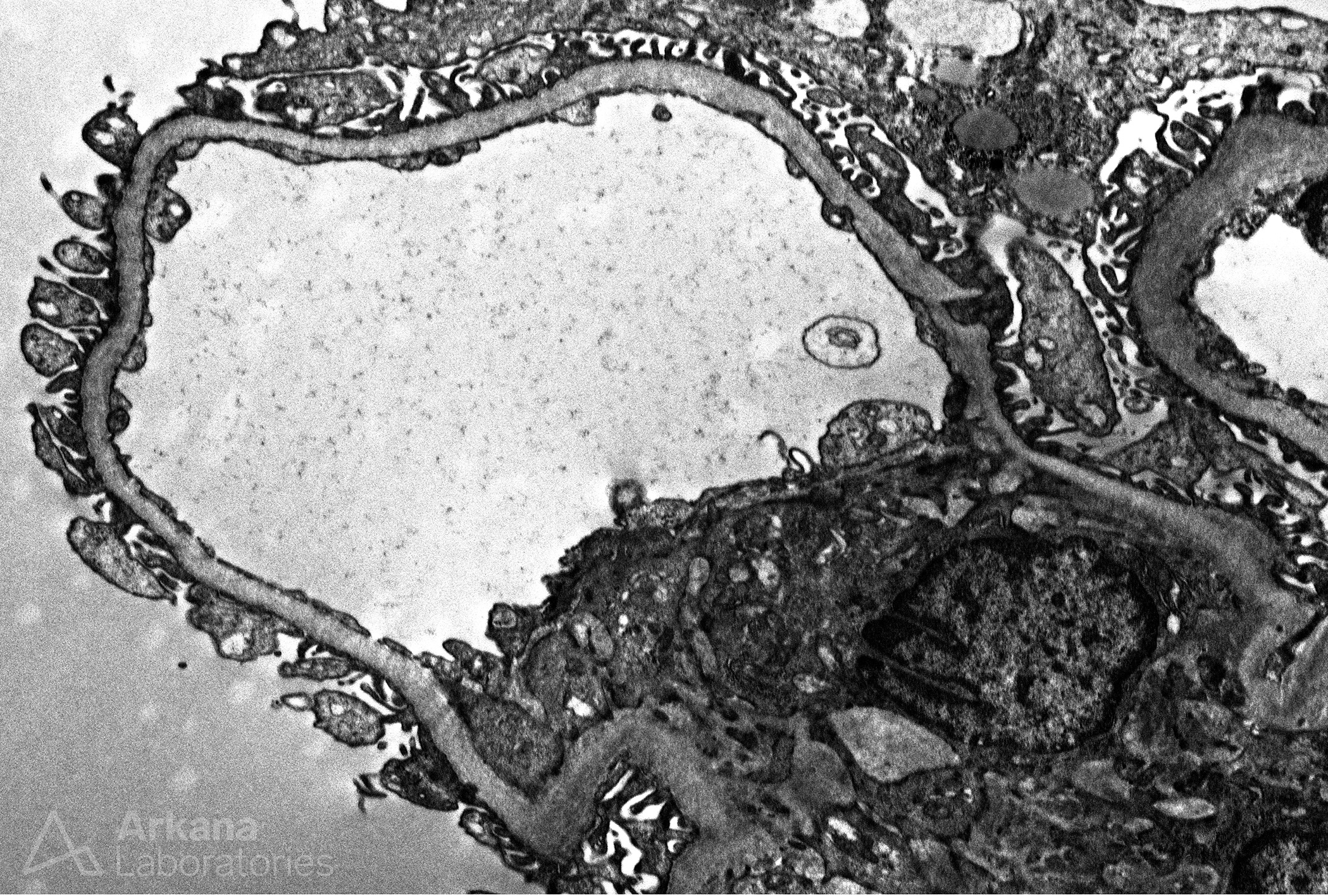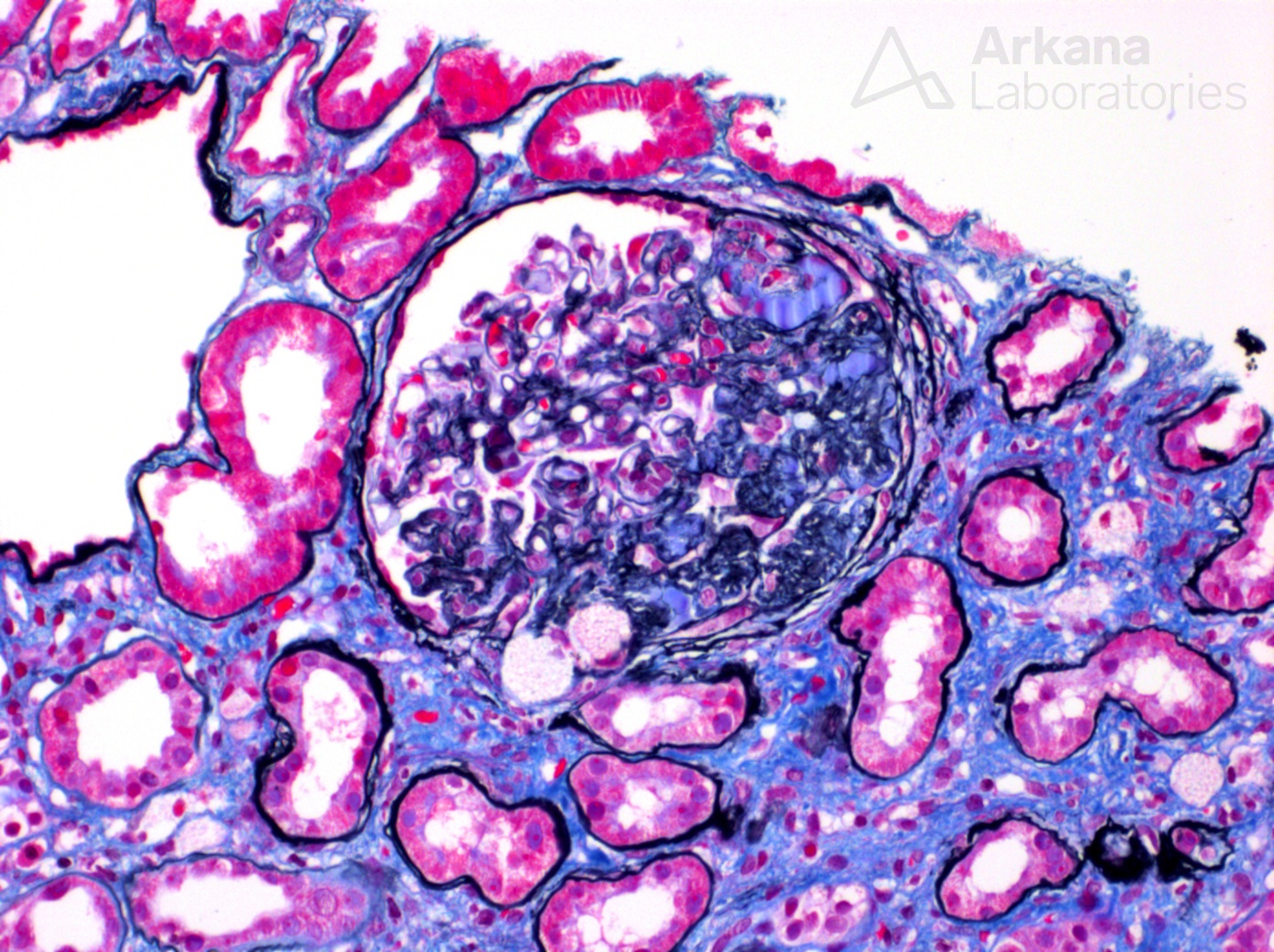The immunofluorescence study is negative. What is your diagnosis?
The photomicrograph shows a focal segmental glomerulosclerotic, NOS lesion. In this setting electron microscopy to evaluate epithelial foot processes is imperative and is shown below. The absence of significant foot process effacement makes a primary podocytopathy unlikely and suggests a secondary etiology. Per history, this 32 y/o Hispanic male presents with nephrotic range proteinuria and mildly depressed serum albumin without full nephrotic syndrome. He has no previous, significant medical history; however, he has a family history of end-stage kidney disease requiring renal replacement therapy in several family members. This history, in concert with the extensive chronicity seen in the biopsy at the patient’s young age, is unusual and raises the possibility of an underlying genetic etiology of focal segmental glomerulosclerosis. Further genetic testing was suggested as was a correlation to exclude known causes of secondary focal segmental glomerulosclerosis.

Quick note: This post is to be used for informational purposes only and does not constitute medical or health advice. Each person should consult their own doctor with respect to matters referenced. Arkana Laboratories assumes no liability for actions taken in reliance upon the information contained herein.

